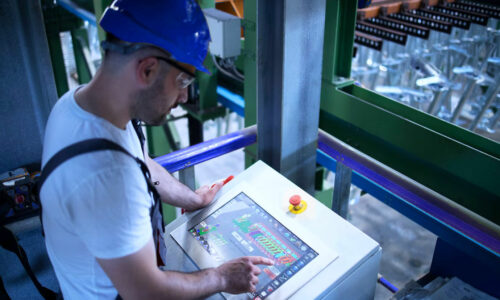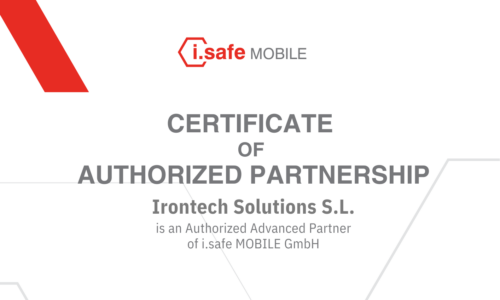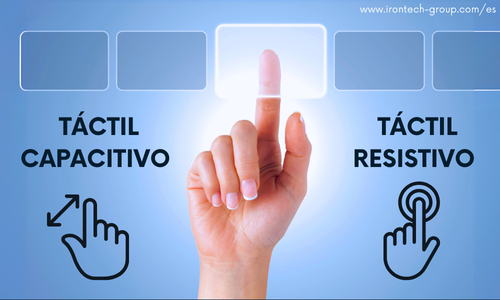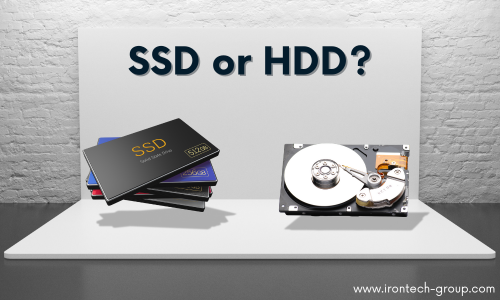In the era of automation and digitization, control and monitoring systems have become indispensable in a wide variety of industries. In this context, the Human-Machine Interface (HMI) has gained critical relevance. In this article, we will explain what an HMI is and its significance in the industrial environment. Additionally, we will highlight the advantages of using a Panel PC as an HMI.
HMI: What is it?
An HMI, or Human-Machine Interface, is a system that enables interaction between a human operator and an automated machine or system. Also known as MMI (Man-Machine Interface), the HMI serves as a point of connection and communication between the user and the system in question. It provides an intuitive and efficient way for operators to control, monitor, and configure devices and processes. Undoubtedly, it has become an indispensable element in industrial computing to carry out industrial automation processes optimally.
HMI, its meaning, and functions
The primary objective of an HMI is to simplify the inherent complexity of automated operations. It provides a graphical and user-friendly interface that allows users to interact with complex systems, machines, or processes in a simple and understandable manner. Some of the key functions of an HMI include:
1. Data Visualization through the HMI screen
The HMI screen displays essential information in a clear and understandable manner for the operator. Through graphics, diagrams, indicators, and visual alarms, the HMI provides a visual representation of data and the system’s status, facilitating real-time decision-making.
2. Control and Operation
The HMI enables the operator to interact with the system and control its functioning. Through buttons, virtual switches, sliders, and touchscreens, the user can start, stop, adjust parameters, and perform specific actions as per the process requirements.
3. Configuration and Programming
The HMI also offers the ability to configure and program automated devices or systems. With an intuitive interface, users can set reference values, define operational sequences, and customize settings to adapt the system to different requirements and conditions.
4. Diagnosis and Maintenance
In addition to everyday operation, the HMI facilitates problem identification and resolution in case of failures or errors. It provides diagnostic tools, event logs, and alarms, allowing technicians to efficiently detect and resolve issues. Moreover, the HMI screen can also grant access to user manuals and relevant technical documentation.
Differences between HMI and Panel PC
Both HMIs and Panel PCs may look similar, but they have fundamental differences in capability, performance, and flexibility. In industrial applications, it is common to use industrial PCs (Panel PCs) and human-machine interfaces (HMIs) to acquire, process, store, or visualize data.
Although their design may be indistinguishable in factories, they technically have differences that go beyond their external appearance. These differences include features, connectivity, levels of flexibility to modify or add functionalities to the system, and, of course, overall performance.
HMI
HMIs are hardware pieces designed to communicate with a specific supplier’s programmable logic controller (PLC). They are proprietary, and their connectivity with third parties can be a challenge due to the restrictions of the communication controller integrated into the firmware. Additionally, traditional HMIs are typically only compatible with the manufacturer’s specific design software, limiting users to a single provider.
Another drawback is that the various HMI design software packages available in the market are often not compatible with each other. This prevents transferring visualization projects from one provider to another, increasing the cost and development time and complicating post-implementation support for the automation system.
Traditional HMIs have a closed and limited operating system, which prevents installing other software on them beyond the runtime provided by the manufacturer.
Panel PC
With a Panel PC, it is possible to completely replace traditional PLCs and HMIs, as it acts as a logic controller, data hub, and display interface all in one piece. This reduces costs and improves performance and capability. Panel PCs use higher-performing CPUs, more RAM, and larger mass storage space (SSD or HDD). Additionally, they have larger displays that allow showing more data simultaneously and facilitate the operator’s visualization. They offer numerous interfaces, such as dual Ethernet ports, multiple USB and/or serial ports, enabling greater connectivity and facilitating adaptation to future applications.
At Irontech, during the assembly process of Panel PCs, the specifications of each customer are followed (type of screen, touch sensor, processor, etc.). Finally, all electronic components are assembled and sealed in housings designed and produced by the company’s engineering department.
Advantages of Using a Panel PC as an HMI
As technology advances, the Panel PC has emerged as a preferred option to implement an HMI in various industrial environments. Here are some of the benefits offered by using a Panel PC as an HMI:
1. Compact Integration and Space Saving
A Panel PC combines the functionality of a industrial computer and a touchscreen display into a single compact unit. This allows significant space saving, especially in applications where space is limited. The Panel PC is directly mounted on the machine or system, eliminating the need for additional components and bulky cables, making it ideal for easy HMI system integration.
2. Intuitive and User-Friendly Interface
These devices are designed with ease of use and intuitiveness in mind. With capacitive touchscreen HMI displays and an attractive graphical interface, operators can interact with the system naturally and smoothly. This reduces the learning curve and minimizes operator errors, enhancing efficiency and productivity.
3. Durability and Industrial Resistance
Panel PCs are designed to withstand demanding industrial environments. They are resistant to vibrations, shocks, dust, humidity, and high temperatures. Additionally, their robust construction and IP protection ensure reliable operation even under adverse conditions. This makes them an ideal choice for industrial applications in sectors such as manufacturing, process automation, and machinery monitoring.
4. Versatile Connectivity and Compatibility
These advanced devices offer a wide range of connectivity options, allowing integration with various systems and peripheral devices. They can connect to industrial networks, communicate with PLCs (Programmable Logic Controllers), and other automation equipment. Moreover, they support different communication protocols, facilitating interoperability in heterogeneous environments.
5. Real-Time Monitoring and Analysis
An HMI screen is required to provide real-time visualization of system data and parameters, enabling operators to monitor performance and detect any anomalies or deviations. This facilitates informed decision-making and timely implementation of corrective measures, thereby improving operational efficiency and product quality.
Conclusion on the Integration of a Panel PC as an HMI
In summary, the HMI, or Human-Machine Interface, plays a vital role in the automation and control of systems in a wide range of industries. It provides an intuitive and efficient way for operators to interact with complex machines and processes, facilitating control, monitoring, and configuration of automated systems. The use of a Panel PC as an HMI offers significant advantages, such as compact integration, an intuitive interface, industrial durability, versatile connectivity, and real-time monitoring. By leveraging the capabilities of Panel PCs, companies can enhance efficiency, productivity, and decision-making in their operations.



